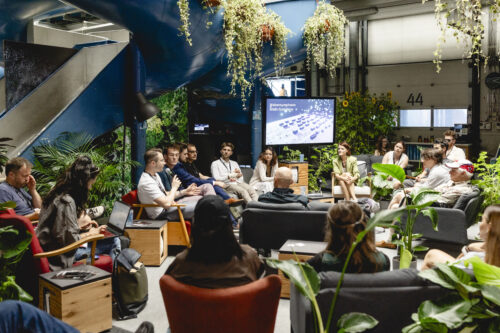
Projects
Projects
-
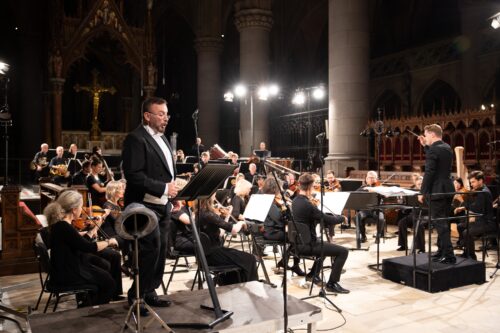
Walzersymphonie
Johann Strauss II and Creative AI
The year 2025 marks the 200th birthday of world-famous composer Johann Strauss II. On behalf of Johann Strauss Festjahr 2025 Wien, the Ars Electronica Futurelab is dedicating itself to this anniversary with Walzersymphonie (Waltz Symphony). The project’s central question is: “How can artists use the creative potential of AI technologies?”
-
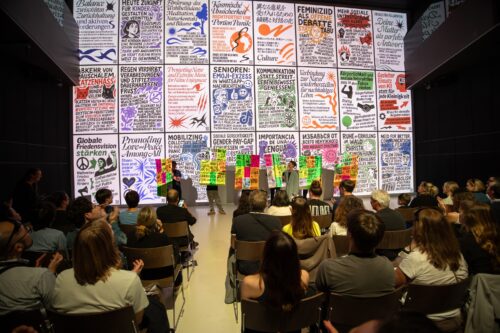
Futurelab Night 2025
Immersive Future Report @ Ars Electronica Festival
Immersive experiments in synchronization, co-presence with avatars in hybrid spaces, and explorations of n-dimensional Origami made both visible and audible: Futurelab Night 2025 was once again the performative highlight of the Ars Electronica Futurelab’s activities at the Ars Electronica Festival. On the Deep Space 8K stage, artistic research transformed into captivating, multi-sensory experiences.
-

Converge 2
Avatars in Dialogue and Motion
Converge 2 is an interactive work by the Ars Electronica Futurelab for Deep Space 8K. Up to eight participants on site and one external person in a motion capture suit engage through voice, movement, and emerging tech. The project is based on SHARESPACE, a large European R&D project on using avatars in social situations.
-
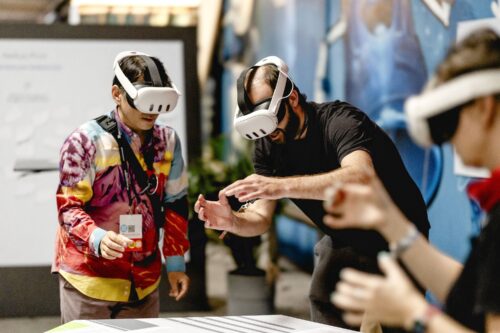
NeXus Print
Immersive XR Sandbox for Inclusive Co-Creation
NeXus Print is a creative sandbox communication tool that enables groups to collaboratively and simultaneously explore, shape, and share their collective imagination in real time. It invites users into a shared immersive XR space where they co-create and reimagine environments using generative AI in a live, participatory process.
-
![Oribotics [n-Dimensional]](https://ars.electronica.art/futurelab/files/2025/09/tm4975-2_3000x2000-500x333.jpg)
Oribotics [n-Dimensional]
Can Origami Fold Into More Dimensions?
This project investigates the intersection of origami theory and robotics through computationally generated, multi-dimensional structures, culminating in a series of artworks that explore the geometric, aesthetic, and conceptual potential of rigid origami.
-

Alter.Ego
How Do AI Personalities Affect Us?
Flashing lights, whirring motors, and cheerful chimes – at first glance, Alter.Ego looks like an ordinary arcade game. Yet instead of controlling a joystick to win a prize, players must engage in dialogue with one of its shifting AI personalities and persuade it to cooperate.
-
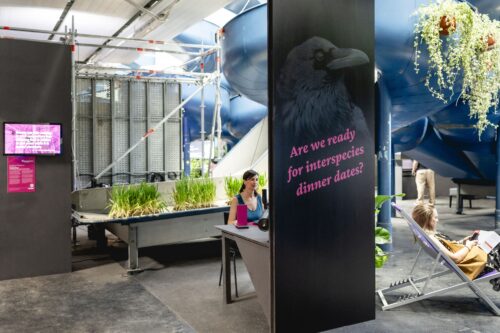
Corpus Corax
Speculative Human-Raven Translator
Corpus Corax is a speculative, interactive interspecies experience that immerses the visitors in raven communication in an age of artificial intelligence, animal intelligence, and human confusion.
-
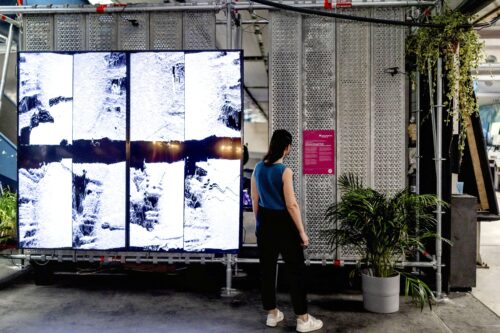
Inference Ground Truth
Human Experience and Machinic Reality
Inference Ground Truth explores how machines and humans perceive and record reality. Modern philosophy tells us that true objectivity is impossible. Today’s culture and media often compare personal impressions of shared moments. But even what we seem to agree on is filtered through human perception. This project is a reminder of that deep subjectivity.
-

Citizen Manifesto
Societal Dialogue Aided by AI
Citizen Manifesto is an interactive installation that transforms future visions in uncertain times into posters, culminating in a diverse and vibrant collective manifesto. The project showcases how the transparent use of generative AI can support personal expression and civic dialogue.
-
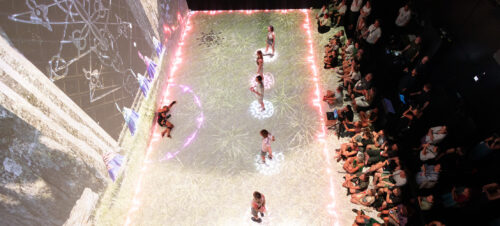
SHARESPACE
Exploring Social Spaces with Avatars
How could humans use digital avatars in the near future? How can we engage in social situations that include both human and automated avatars? And what technology do we need to explore these ‘hybrid’ spaces together? This is the focus of the European R&D project SHARESPACE.
-
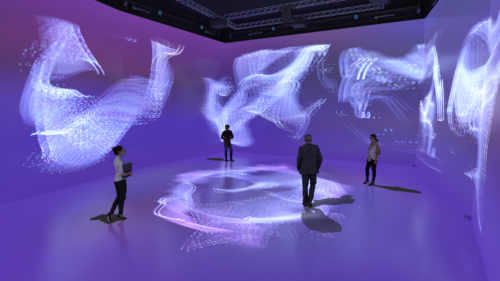
mozXR
Open-Source Software for Immersive Art
The X-Reality-Lab at the Mozarteum University is a new immersive space for music, visualization, interaction, performative art, extended reality, as well as artistic and scientific research. To implement all these experiments, the free open-source software mozXR is being developed.
